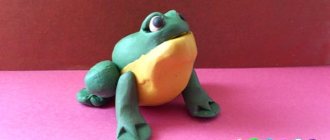- Where does the octopus live?
Octopuses are perhaps the most amazing of the mollusks that live in the depths of the sea. Their strange appearance surprises, delights, and sometimes frightens, the imagination pictures giant octopuses capable of easily sinking even large ships. This kind of demonization of the octopus was greatly facilitated by the work of many famous writers, for example, Victor Hugo described in his novel “Toilers of the Sea” octopus as “the absolute embodiment of evil.” In reality, octopuses, of which there are more than 200 species in nature, are completely harmless creatures, and it is rather they who need to be afraid of us humans, and not vice versa.
The closest relatives of octopuses are squid and cuttlefish; they themselves belong to the genus of cephalopods, the family of octopuses proper.
Description, structure, characteristics
The appearance of the octopus is confusing; it is immediately unclear where its head is, where its mouth is, where its eyes and limbs are. But then everything becomes clear - the sac-like body of the octopus is called the mantle, which is fused with a large head, and there are eyes on its upper surface. The eyes of an octopus have a convex shape.
The octopus's mouth is tiny and surrounded by chitinous jaws called the beak. The latter is necessary for the octopus to grind food, since they cannot swallow prey whole. He also has a special grater in his throat, which grinds pieces of food into pulp. Around the mouth there are tentacles, which are the true calling card of the octopus. The octopus's tentacles are long, muscular, and their lower surface is studded with suckers of varying sizes, which are responsible for taste (yes, the octopus's suckers contain its taste buds). How many tentacles does an octopus have? There are always eight of them, in fact, the name of this animal comes from this number, since the word “octopus” means “eight legs” (well, that is, tentacles).
Also, twenty species of octopuses have special fins that serve as a kind of rudders when they move.
Interesting fact: octopuses are the most intelligent among mollusks; the octopus' brain is surrounded by special cartilage, strikingly similar to the skull of vertebrates.
All the senses of octopuses are well developed, especially vision; the eyes of octopuses are very similar in structure to human eyes. Each of the eyes can see separately, but if the octopus needs to look at some object more closely, the eyes easily come together and focus on a given object, in other words, octopuses have the rudiments of binocular vision. Octopuses are also capable of detecting infrasound.
The structure of the internal organs of an octopus is unusually complex. For example, their circulatory system is closed, and the arterial vessels are almost connected to the venous ones. The octopus also has three hearts! One of them is the main one, and two small gills, whose task is to push blood to the main heart, otherwise it directs the flow of blood throughout the body. Speaking of octopus blood, it's blue! Yes, all octopuses are real aristocrats! But seriously, the color of octopus blood is due to the presence of a special pigment in it - geocyamine, which in them plays the same role as hemoglobin in us.
Another interesting organ that the octopus has is the siphon. The siphon leads into the mantle cavity, where the octopus collects water, and then, sharply releasing it, creates a real
a jet stream pushing his body forward. True, the octopus’s jet device is not as perfect as that of its relative the squid (which became the prototype for the creation of a rocket), but it is also excellent.
The sizes of octopuses vary between species, the largest of which is 3 meters long and weighs about 50 kg. Most species of medium-sized octopuses range from 0.2 to 1 meter in length.
As for the color of octopuses, they usually have red, brown, or yellow colors, but they can also easily change their color like
chameleons Their mechanism for changing color is the same as that of reptiles - special chromatophore cells located on the skin can stretch and contract in a matter of seconds, simultaneously changing color, and making the octopus invisible to potential predators, or expressing its emotions (for example, angry the octopus turns red, even black).
What does an octopus eat?
Photo: Big octopus
Octopuses are convinced predators that are capable of swallowing almost any prey, even those larger than themselves. A hungry octopus waits patiently in a secluded place, changing its color to camouflage. When prey swims by, it makes a sharp lunge, trying to grab it with all its tentacles at once.
Speed is very important in this matter - a strong opponent can break free of his grip. Therefore, the octopus immediately pulls the prey into its mouth. Its beak bites the victim if it does not fit into the mouth, and the pharynx performs a chewing function - it crushes food into small pieces.
Interesting fact: Poisonous octopuses extremely rarely use poison to kill prey - this is more of a defense mechanism than an adaptation for hunting.
Most often, octopuses feed on the following representatives of the ocean fauna:
- any fish, including poisonous ones;
- crustaceans, which sometimes give serious resistance to octopuses;
- the octopus's favorite delicacy is lobsters, lobsters and crayfish, which, upon seeing a formidable predator, strive to swim away from it as quickly as possible;
- sometimes large octopuses can catch a small shark;
- Cannibalism is not a rare phenomenon among octopuses. Stronger individuals often eat smaller ones.
There are times when an octopus does not calculate its strength when attacking a particular victim, or a predatory fish itself tries to eat the octopus. Then a fight ensues, in which the octopus may lose a tentacle. But octopuses are weakly susceptible to pain, and their tentacles grow quickly.
Nutrition
Octopuses, however, like other cephalopods, are predatory creatures; their diet consists of a variety of small fish, as well as crabs and lobsters. They first capture their prey with their tentacles and kill them with poison, then they begin to absorb them, since they cannot swallow whole pieces, they first grind the food with their beak.
№9
They are one of the most flexible animals on our planet. All this is caused by the fact that they do not have a skeleton. In fact, the only hard part of their body is their beak, which is made of cartilage and is located inside the head. Thanks to this, they can compress their bodies and squeeze into small holes. Surprisingly, an adult octopus can even squeeze into the neck of a bottle.
Danger to humans
Only on the pages of books or in various science fiction films, octopuses are incredibly dangerous creatures, capable of not only easily killing people, but also destroying entire ships. In reality, they are quite harmless, even cowardly; at the slightest sign of danger, the octopus prefers to retreat by flight, no matter what happens. Although they usually swim slowly, when in danger they turn on their jet engine, allowing the octopus to accelerate to a speed of 15 km per hour. They also actively use their ability of mimicry, merging with the surrounding space.
Only the largest species of octopus can pose some danger to scuba divers, and then only during the breeding season. In this case, of course, the octopus itself will never be the first to attack a person, but in defense, it can sting him with its poison, which, although not fatal, will, of course, cause some unpleasant feelings (swelling, dizziness). The exception is the blue-ringed octopus, which lives off the coast of Australia, whose nerve venom is still fatal to humans, but since this octopus leads a secretive lifestyle, accidents with it are very rare.
№10
Perhaps one of the most important features of their tentacles is the presence of suckers. These suckers are made of tiny complex muscles, making them more complex than regular suckers. They can apply intense pressure, enough to tear flesh. They are also very sticky. In the case of the giant octopus, one of its suction cups can lift an object weighing up to 16 kg.
Types, photos and names
Of course, we will not describe all 200 species of octopuses; we will focus only on the most interesting of them.
Giant octopus
As you probably guessed from the name, this is the largest octopus in the world. It can reach up to 3 meters in length and up to 50 kg in weight, but these are the largest individuals of this species; on average, a giant octopus is 30 kg and 2-2.5 meters in length. Inhabits the Pacific Ocean from Kamchatka and Japan to the west coast of the USA.
Common octopus
The most widespread and well-studied species of octopus, living in the Mediterranean Sea and the Atlantic Ocean, from England to the coast of Senegal. It is relatively small, its body length is 25 cm, and together with the tentacles it is 90 cm. The body weight is on average 10 cm. It is very popular in the cuisine of the Mediterranean peoples.
Blue-ringed octopus
And this beautiful species of octopus, which lives off the coast of Australia, is also the most dangerous among them, since it is its poison that can cause cardiac arrest in humans. Another characteristic feature of this octopus is the presence of characteristic blue and black rings on its yellow skin. A person can only be attacked while defending himself, so to avoid trouble, you just need to stay away from him. It is also the smallest octopus, its body length is 4-5 cm, its tentacles are 10 cm, and its weight is 100 grams.
№6
They have very small brains, no larger than those of birds. Despite this, this mollusk is still considered one of the most intelligent marine inhabitants in the world. These cephalopods can camouflage themselves, solve various problems such as opening a mollusk, etc.
It is worth noting that almost 2/3 of the brain of this animal is responsible for the work of the tentacles.
Reproduction
Now let's look at how octopuses reproduce; this process is very interesting and unusual. Firstly, they reproduce only once in their lives and this action has dramatic consequences for them. Before the mating season, one of the tentacles of a male octopus turns into a kind of sexual organ - a hectocotylus. With its help, the male transfers his sperm into the mantle cavity of the female octopus. After this act, the males, alas, die. Females with male reproductive cells continue to lead a normal life for several months, and only then lay eggs. There are a huge number of them in the clutch, up to 200 thousand pieces.
Then it lasts for several months until the young octopuses hatch, during which time the female becomes an exemplary mother, literally blowing away specks of dust from her future offspring. In the end, the female, exhausted from hunger, also dies. Young octopuses hatch from eggs completely ready for independent life.
Natural enemies of the octopus
Photo: Octopus
Among the natural enemies of the octopus, we can distinguish those who pose the greatest danger to it:
- sharks, including reef sharks;
- seals, sea lions and fur seals;
- dolphins and killer whales often play with octopuses, eventually eating them or leaving them alive;
- some large fish.
If an octopus is found by a predator in a state of secrecy, the first thing it will do is try to swim away. Many species release clouds of ink at the enemy and then swim away - this is how the octopus buys time until the enemy sees it or is in a state of shock. Also, for the purpose of self-preservation, octopuses hide in narrow crevices and wait until the enemy leaves.
Another unique way of protecting the octopus is autotomy. When the enemy grabs the creature by the tentacle, the octopus deliberately detaches it from the body and flees. This is similar to how a lizard sheds its tail if it is grabbed by it. The tentacle subsequently grows back.
Interesting fact: Some octopuses have been observed engaging in autocannibalism—eating their own tentacles. This is due to a disease of the nervous system, in which the octopus, experiencing the slightest hunger, eats the first thing that, literally, “comes to hand.”
Scientists believe that octopuses are the most intelligent species of invertebrates. They show intelligence and observation in all kinds of experiments. For example, octopuses can open jars and primitive latches; Individual octopuses are able to put cubes and circles into certain holes that match in shape. The high intelligence of these creatures makes them rare prey for marine life, most of which do not have this indicator.
Interesting Facts
№11
The blue-ringed octopus may look beautiful, but appearances are deceiving. The blue-ringed octopus is a highly aggressive and venomous genus. The genus contains three species. They are considered one of the most poisonous animals on the planet. Despite its small size (approximately 20 cm), its venom is so toxic that one bite is enough to kill a person. One blue-ringed octopus has enough venom to kill 26 people. What makes its bite more dangerous is that there is still no antidote, and the bite is often invisible, so the victim does not even suspect that the most dangerous poison on the planet has entered his body.
Video
And finally, an interesting documentary about octopuses from National Geographic.
Author: Pavel Chaika, editor-in-chief of Poznavaika magazine
When writing the article, I tried to make it as interesting, useful and high-quality as possible. I would be grateful for any feedback and constructive criticism in the form of comments on the article. You can also write your wish/question/suggestion to my email [email protected] or Facebook, with respect, the author.
Author page
№12
Perhaps one of the most interesting species is Grimpoteuthis, also known as Dumbo the octopus. This is a genus of deep-sea octopuses that live at depths of up to 7000 meters. Typically, Grimpoteuthys does not exceed 20 cm in length. This is the only octopus on the planet that has large fins on the sides of its head, which are very similar to the ears of Dumbo the elephant.
Color
Octopuses can change color
An octopus can change skin color depending on the circumstances. He does this with the help of special pigment cells located on the upper shell. When you need to “repaint” your body a certain color, the nervous system sends a special impulse that causes them to shrink or stretch, which is why the desired shade appears.
Interesting fact : when an octopus is scared, its shell turns white, and when it feels angry, it turns red.









